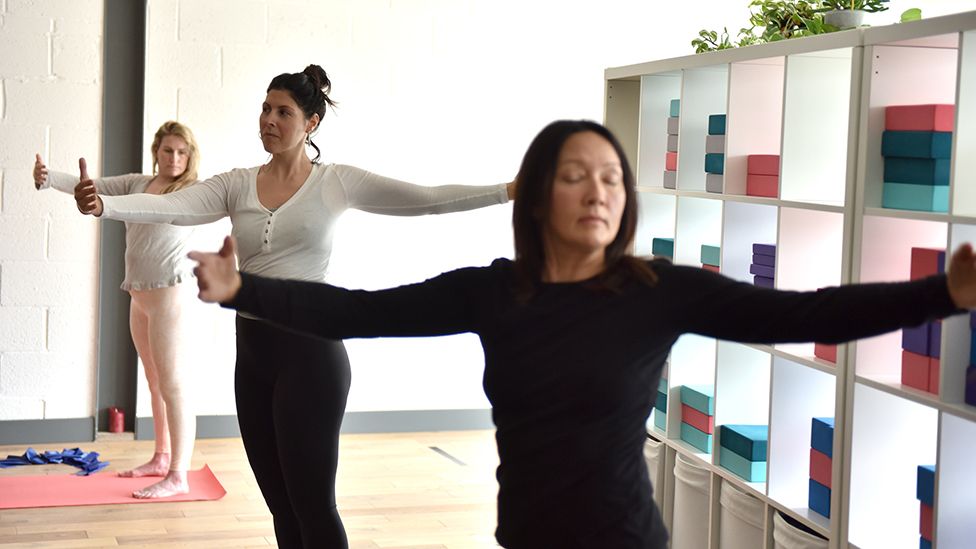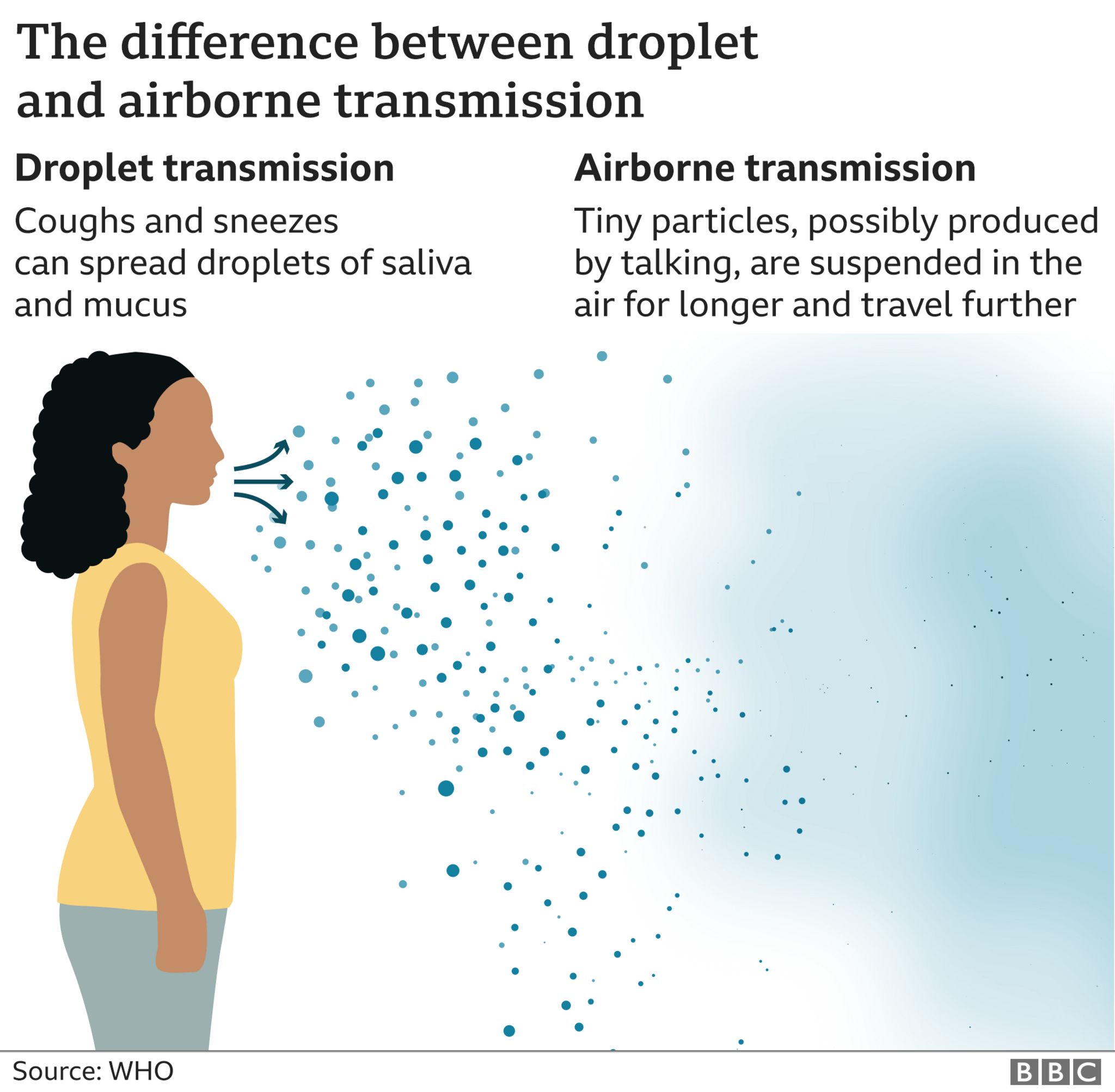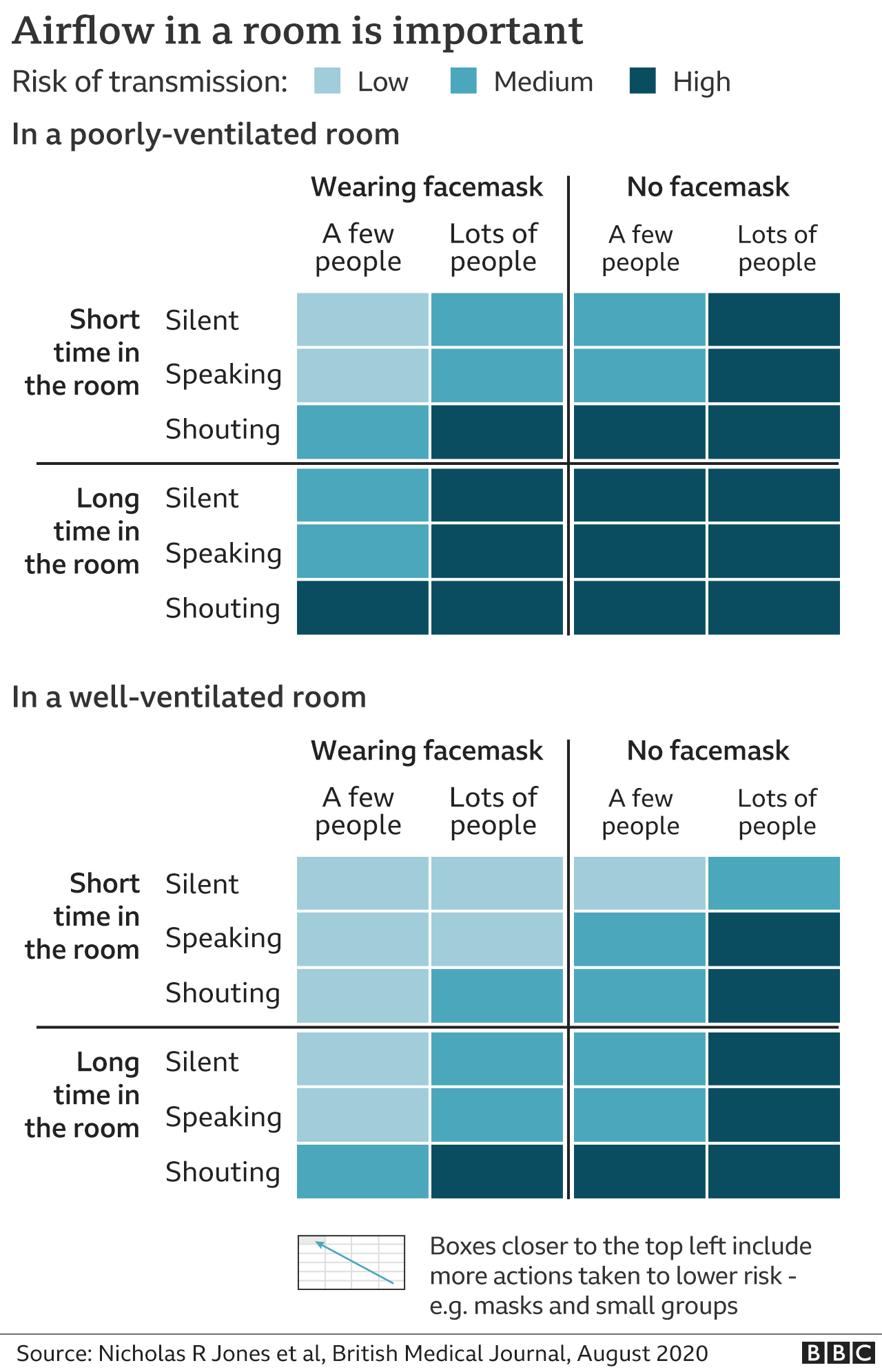What are the actions we can take to reduce our risk of catching the virus?

image copyrightGetty Images
People can once again spend time indoors with friends and family they don’t live with.
Covid remains a risk, so what have we learned about how to stay safe?
Many of us have got used to doing the “pavement dance” to avoid coming too close to fellow pedestrians.
But it’s highly unlikely such a short period of exposure outdoors could lead to an infection.
Admittedly, the closer you are to an infected person, the more likely you are to catch the virus – which is why we’ve been told to stay 2m (6ft) apart.
But most infections happen in places indoors where people are very near to one another.
There’s also the question of how long you’re near the infected person.
We don’t know exactly how much virus exposure is necessary to cause illness – and it will vary by age and health – but it does have to reach a critical mass before it overwhelms the immune system.
And it’s worth remembering the NHS Test and Trace app only alerts contacts who have been close to a confirmed case for 15 minutes or more.
At the start of the pandemic, even going for a walk with a friend wasn’t allowed – but scientists are confident being outdoors is much safer than being indoors.

At the start of the pandemic, a lot of focus was on surfaces. People washed groceries and avoided touching buttons at pedestrian crossings. Councils shut playgrounds and cordoned off park benches.
Yet it’s been all but impossible to find an outbreak linked to an infected surface.
“It’s to do with how the virus actually enters your system – it’s through the airways,” says Dr Eilir Hughes, a GP and campaigner for more protective PPE for NHS staff.
The virus takes hold in the body via the respiratory system – that’s why testing for it involves a swab up the nose and down the back of the throat.
It would take an extremely unlikely chain of events for infected droplets on an object to end up in someone’s nose or throat.
Hygiene is important, but washing hands and surfaces excessively, and avoiding touching objects – so-called “hygiene theatre” – has little impact on the spread of Covid.
A 2m distance from other people may not always be enough to avoid infection.
The virus spreads in particles that come out of our nose and mouth when we breath, cough, sneeze and speak.
Larger particles fall to the ground with gravity, like raindrops, and probably only hit people within 2m.
But some particles are so small they can float in the air – similar to deodorant or hairspray.

Contrary to what was believed at the beginning of the pandemic, smaller particles can cause outbreaks.
That may well be how people have caught Covid from the opposite sides of buses, restaurants and even quarantine hotels.
Experts are now putting more emphasis on ventilation.
Good airflow dilutes and blows away droplets and disperses aerosols more effectively.
Indoors, it’s important to “make sure you’ve got some means of getting fresh air in and out of a space”, says Prof Cath Noakes, a ventilation expert at the University of Leeds.
At home it’s a good idea to keep a window or door open. And check that restaurants and pubs you visit are doing the same.

If there are more people in one place, there’s more chance one of them is infected – and more targets for them to infect.
Crowding also makes it more likely people will come into close contact.
And the possibility of airborne transmission means even if you only interact with a handful of people, you could still catch it from someone on the other side of the room.
Covid jabs protect you from becoming ill and go a long way to preventing you making other people ill too.
The chance of a vaccinated person transmitting Covid to an unvaccinated person is small. But the chances of infection spreading between two fully-vaccinated people are tiny.
If you’re in a room with people who are all two weeks past their second dose, you have a very good level of protection before you even start to think about other measures.